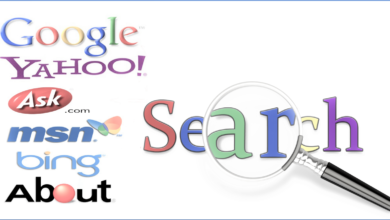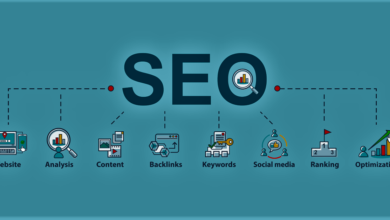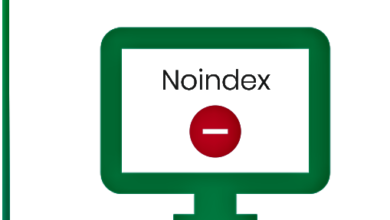دليل تحسين محركات البحث لمطوري الويب

دليل تحسين محركات البحث لمطوري الويب
من المهم جعل المحتوى الخاص بك قابلاً للبحث لأنه يجعله أكثر صلة بالمستخدمين الذين يشاهدون المحتوى الخاص بك. وهذا ما يسمى تحسين محرك البحث (SEO) ، والذي يمكن أن يجذب المزيد من المستخدمين المهتمين إلى موقعك. إذا كان بحث Google يواجه صعوبة في فهم صفحتك ، فمن المحتمل أنك تفقد مصدرًا مهمًا للزيارات.
يغطي هذا الدليل ما يمكن للمطورين القيام به للتأكد من أن مواقعهم تعمل بشكل جيد مع بحث Google. بالإضافة إلى العناصر الموجودة في هذا الدليل ، تأكد من أن موقعك آمن وسريع ومتاح للجميع ويعمل على جميع الأجهزة.
اكتشف كيف ترى Google موقعك
للبدء ، اختبر موقعك في اختبار مناسب للجوّال لترى كيف يرى Googlebot موقعك. Googlebot هو زاحف ويب من Google يبحث عن الصفحات الجديدة والمحدثة ويضيفها إلى فهرس Google. لمعرفة المزيد حول هذه العملية ، انتقل إلى كيفية عمل بحث Google.
قد تندهش عندما تجد أن Googlebot لا يرى دائمًا كل ما يراه في المتصفح. في المثال التالي ، لا يعرف Googlebot أي صور في هذه الصفحة لأن الصفحة تستخدم وظيفة JavaScript لا يدعمها Googlebot.
هذه هي الطريقة التي يرى المستخدمون الصفحة. يمكن للمستخدمين عرض الصور والنصوص في المتصفح.
هذه هي الطريقة التي يعرض بها Googlebot الصفحة. Googlebot ليس على علم بأي صور في هذه الصفحة لأن الصفحة تستخدم وظيفة JavaScript لا يدعمها Googlebot.
تحقق من الارتباط الخاص بك
ينتقل Googlebot من عنوان URL إلى عنوان URL الذي يتبع الروابط وخرائط الموقع وعمليات إعادة التوجيه. يتعامل Googlebot مع كل عنوان URL كما لو كان عنوان URL الأول والوحيد الذي يراه على موقعك. للتأكد من أن Googlebot يمكنه العثور على جميع عناوين URL على موقعك:
- الرجاء استخدام
<a href>عنوان URL صالح. تأكد من إمكانية الوصول إلى جميع الصفحات على الموقع من خلال روابط من صفحات أخرى قابلة للاكتشاف. تأكد من أن رابط الإحالة الخاص بك يتضمن نصًا أو ، بالنسبة للصور ، سمة نص بديل ذات صلة بالصفحة المقصودة. الروابط التي يمكن تتبعها هي علامات بامتداد الامتداد
href. - أنشئ خرائط مواقع وأرسلها لمساعدة Googlebot في الزحف إلى موقعك بشكل أكثر ذكاءً. ملف Sitemap هو ملف تقدم فيه معلومات حول الصفحات ومقاطع الفيديو والملفات الأخرى على موقعك والعلاقات بينها.
- بالنسبة لتطبيقات JavaScript بصفحة HTML واحدة ، تأكد من وجود عنوان URL لكل شاشة أو جزء من المحتوى.
انظر كيف يستخدم جافا سكريبت
على الرغم من أن Googlebot ينفذ JavaScript ، إلا أن هناك بعض الاختلافات والقيود التي يجب أن تكون على دراية بها عند تصميم الصفحات والتطبيقات لفهم كيفية وصول برامج الزحف إلى المحتوى الخاص بك وعرضه. تعرف على المزيد حول أساسيات JavaScript SEO أو كيفية استكشاف مشكلات البحث المتعلقة بجافا سكريبت وإصلاحها.
لمعرفة المزيد حول كيفية معالجة Googlebot لجافا سكريبت عند الزحف والعرض والفهرسة ، شاهد الفيديو التالي.
اجعل Google محدثًا عند تغير المحتوى
للتأكد من عثور Google على الصفحات الجديدة أو المحدثة بسرعة:
إذا كنت لا تزال تواجه مشكلة في فهرسة صفحاتك ، فتحقق من سجلات الخادم بحثًا عن الأخطاء.
لا تنس الكلمات الموجودة على الصفحة.
يمكن لبرنامج Googlebot العثور فقط على المحتوى المرئي من الناحية النصية. على سبيل المثال ، يتعذر على Googlebot رؤية نص الفيديو. للتأكد من استيعاب بحث Google لموضوع صفحتك:
- تأكد من التعبير عن المحتوى المرئي الخاص بك في شكل نص.
على سبيل المثال ، تعتبر صفحة فئة المنتج التي تحتوي على قائمة من صور القمصان بدون سياق نصي حول كل صورة أقل من المستوى الأمثل. يجب أن تتضمن صفحات فئة المنتج نصًا وصفيًا لكل صورة. - تأكد من أن كل صفحة لها عنوان وصفي ووصف تعريفي . تساعد العناوين الفريدة والأوصاف التعريفية Google في إظهار مدى صلة صفحتك للمستخدمين ، مما يؤدي بدوره إلى زيادة حركة البحث.
- استخدم HTML الدلالية . بينما يقوم Googlebot بفهرسة HTML و PDF والصور ومحتوى الفيديو ، فإنه لا يقوم بفهرسة المحتوى الذي يتطلب مكونًا إضافيًا (على سبيل المثال ، Java أو Silverlight) أو المحتوى المعروض على اللوحة. بدلاً من استخدام المكونات الإضافية ، استخدم ترميز HTML الدلالية للمحتوى الخاص بك كلما أمكن ذلك.
أخبر Google عن الإصدارات الأخرى من المحتوى الخاص بك
لا يعرف Googlebot تلقائيًا أن هناك إصدارات متعددة من موقعك أو محتواك. على سبيل المثال ، إصدارات الأجهزة المحمولة وسطح المكتب ، أو الإصدارات الدولية من موقعك. للتأكد من أن Google تقدم الإصدار الصحيح للمستخدمين ، يمكنك:
تحكم في المحتوى الذي تراه Google
هناك عدة طرق لحظر Googlebot:
- لمنع Googlebot من العثور على صفحتك ، قم بقصر الوصول إلى المحتوى الخاص بك على المستخدمين المسجلين (على سبيل المثال ، استخدم صفحة تسجيل دخول أو قم بحماية صفحتك بكلمة مرور).
- لمنع Googlebot من الزحف إلى صفحاتك ، قم بإنشاء ملف robots.txt.
- لمنع Googlebot من فهرسة صفحاتك والاستمرار في السماح بالزحف ، أضف
noindexملف علامة لافتة.
إذا كان المحتوى الخاص بك لا يظهر في بحث Google وتريد ظهوره ، فاتبع الخطوات التالية:
- تحقق مما إذا كان بإمكان Googlebot الوصول إلى الصفحة باستخدام أداة فحص عنوان URL.
- اختبر ملف robot.txt لمعرفة ما إذا كنت تمنع Googlebot بدون قصد من الزحف إلى موقعك.
- تحقق من ملف HTML
noindexلقواعد العلامات الوصفية.
تمكين النتائج المنسقة لموقعك
يمكن أن تتضمن النتائج المنسقة تخطيطات أو صورًا أو ميزات تفاعلية أخرى يمكن أن تساعد في إبراز موقعك في نتائج البحث. يمكنك مساعدة Google في فهم صفحاتك بشكل أفضل وعرض نتائج بحث ثرية من خلال تقديم أدلة واضحة حول ما تعنيه الصفحة بالبيانات المنظمة على الصفحة. إذا لم تكن متأكدًا من أين تبدأ ، فاستكشف معرض الميزات المتاحة لدينا.



